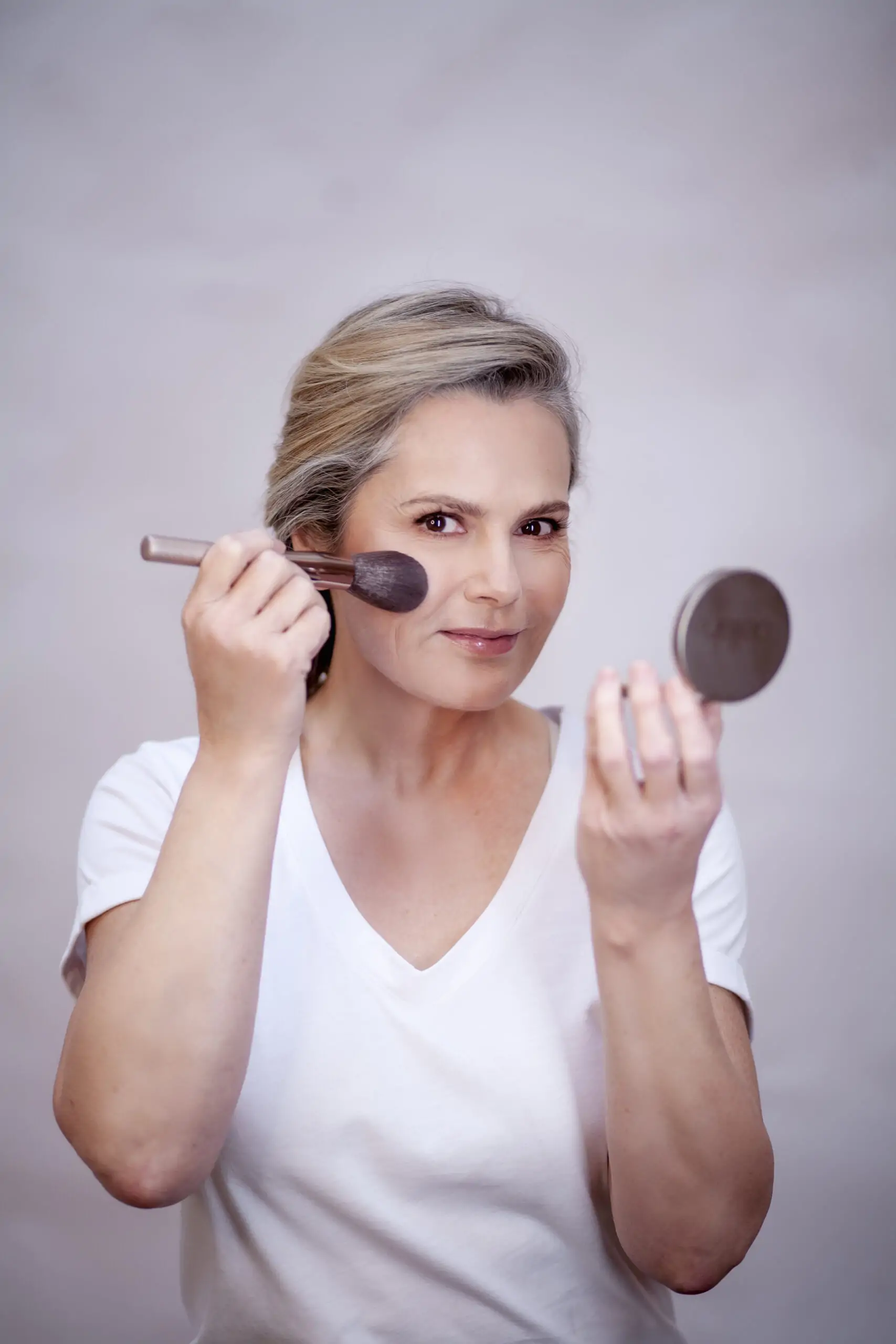Health
Men’s midlife health – what you need to know
From menopause to midlife mental health, hair-loss to vaginal dryness, there’s very little about women’s health that we haven’t written about here at Liz Earle Wellbeing. But what about men’s midlife health?
From the so-called ‘male menopause’ to lifestyle tweaks that can keep the men in our life happy and healthy for the long haul, we take a closer look at men’s midlife health.
A guide to men’s midlife health
Is there a ‘male menopause’?
There is no male equivalent for the menopause as this suggests that symptoms occur as a result of a sudden drop in testosterone levels in midlife, similar to what occurs to women’s estrogen levels during the peri-menopause and menopause.
This does not happen in men. In reality, testosterone levels climb during their twenties and peak at roughly the age of 30. From this age onwards, testosterone production declines at a rate of about 1% per year. This decline can be sped up by lifestyle factors such as diet, a sedentary lifestyle and obesity.
In most men, these declining levels do not result in any adverse symptoms. In some men, this decline can result in a testosterone deficiency (TD). This is also known as male hypogonadism, the ‘manopause’ or andropause. It’s not clear exactly how many men are affected by TD. Studies suggest it could be between 2.1 and 11.8% of middle-aged men.
Both men and women have testosterone in our bodies at varying levels. In men, it’s responsible for many of the characteristics associated with masculinity — a deeper voice, facial hair and increased muscle mass, for instance. But, just as estrogen has a host of functions in the body outside our reproductive organs, the same is true of testosterone. It affects blood pressure, cardiovascular health and bone density as well as libido, concentration and even our ability to form memories.
For this reason, men with a testosterone deficiency can experience whole host of debilitating symptoms. These can include insomnia, fatigue, irritability, a decreased sex drive, and weight gain. In severe cases, men can develop gynaecomastia (male breasts), decreased bone density, night sweats, brain fog and depression as well as a reduction in penis and testicular size.
Diagnosing the ‘manopause’
The symptoms of the ‘manopause’ are varied and often hard to diagnose. This is partly because many of the symptoms — insomnia, a lack of libido and depression, for instance — can be a result of increased stress at work or other pressures that can pile up during midlife such as divorce, or caring for ageing parents, for example. For this reason, the Androgen Deficiency in Ageing Males (ADAM) questionnaire can aid diagnosis:
- Do you have a decrease in libido (sex drive)?
- Are you lacking energy?
- Do you have a decrease in strength and endurance?
- Have you lost height?
- Have you noticed a decreased enjoyment in life?
- Are you sad and/or grumpy?
- Are your erections less strong?
- Have you noticed a recent deterioration in your ability to play sports?
- Do you fall asleep after dinner?
- Have you noticed a deterioration in your work performance?
If a man answers yes to question 1 or 7, or any three other questions, they may be suffering with low testosterone.
If this is the case, it’s important to seek assistance from a healthcare professional. This isn’t only for the treatment of symptoms but also for improved long-term health. Low levels of testosterone in men increase their risk of a number of chronic diseases. Obesity, heart disease, high blood pressure and high cholesterol, osteoporosis and diabetes are all more common in men with lower than normal levels of testosterone.
How to diagnose the ‘manopause’
A simple blood test taken early in the morning can diagnose a testosterone deficiency. The British Society of Sexual Medicine advise that ‘total’ testosterone levels should be in the region of 12-30nmol/l. If a man’s levels are lower than this they might be prescribed testosterone replacement therapy (TRT) or may be advised to make a number of lifestyle changes first. In obese patients, a 10% reduction in body weight can increase the total testosterone level by up to 4nmol/l. Plus, 30-45 minutes of exercise several times a week can also have a notable positive effect on testosterone levels, as can getting eight hours of sleep a night.
Testosterone-boosting supplements should be avoided, but there is some evidence that magnesium supplements can maximise testosterone production by improving the quality of deep sleep.
Heart disease in men
In 2016, the World Health Organisation listed heart disease and stroke amongst the world’s biggest killers. Women are also vulnerable to heart disease with more women suffering a stroke than men but this discrepancy doesn’t appear until women reach old age. Men tend to develop the risk factors that lead to heart disease (high blood pressure, cholesterol and diabetes) at a younger age than their female counterparts, and overall deaths from strokes and heart disease are highest in middle-aged men when compared with any other demographic.
It’s not clear why men are more susceptible to heart attacks than women. One theory is that high levels of estrogen in women protect our hearts against disease — this explains why our risk of heart disease increases after the menopause.
Another theory is that the increased risk of heart disease is thanks to differences where men and women deposit the fat on their bodies.
While women tend to be more ‘pear-shaped’, accumulating weight on our hips and thighs as well as our tummies, men tend to be more apple-shaped, storing fat around their mid-section. This tummy fat is the most dangerous when it comes to heart disease. The fat is poorly stored and tends to get released into surrounding tissues and arteries.
Estrogen is also protective when it comes to keeping women’s blood pressure at healthy levels. Research shows that men’s arteries tend to be more sensitive to the effects of salt in their diet. Their blood pressure also goes up more during periods of stress when compared to women.
Men’s lifestyle habits may also play a role in poor heart health. In a recent survey, 24% of men said that their average weekly alcohol consumption was more than the recommended amount (14 units), compared with just 11% of women.
How can men reduce their risk of heart disease?
Maintain a healthy weight
Interventions such as avoiding sugary drinks and snacks (see our low sugar recipes here), trying intermittent fasting or even adopting a well-planned high-fat diet can all help to stay slim.
Avoid excess alcohol consumption and smoking
For a non-boozy beverage try our delicious gut-friendly kombucha cocktail recipes or an alcohol-free beer.
Get plenty of exercise
Overtime exercise can improve blood flow to organs affected by blocked arteries and can even undo some of the damaging effects of CVD. Staying active can also stimulate testosterone production, boost levels of healthy cholesterol and reduce blood pressure.
Try an omega-3 supplement
Anti-inflammatory omega-3 fatty acids are essential for good heart health. We can get plenty in our diet by eating oily fish a few times a week or by taking a good quality fish oil supplement. Algae supplements are available for vegetarians and vegans.
Seek a doctor’s help
In those who are genetically prone to high blood pressure, these lifestyle interventions may not be enough to keep this risk factor under control. In these cases doctors can prescribe medication to keep blood pressure within normal limits and significantly reduce their risk of a heart attack in later life.
Mental health and men
In the UK, approximately one in eight men are suffering with some form of mental illness. Midlife men appear to be particularly affected.
A 2018 report from the Samaritans found that there were 6,507 suicides in the UK that year. Approximately 75% of these cases were men aged between 45-49.
Despite efforts to make mental health less taboo in recent years, many men still struggle to open up about anxiety and depression and find talking about their feelings a real challenge. Checking in with the men in our lives and encouraging them to share how they’re feeling can go a long way to relieve this pressure.
It’s also important to encourage men to seek professional help when they’re suffering. In the UK, men are currently about half as likely as women to access therapy. Research shows that younger men are at an increased risk of turning to dangerous coping mechanisms such as drug and alcohol abuse instead.
Healthy lifestyle interventions can also help to improve wellbeing for men’s midlife health. Exercise boosts feel-good brain chemicals such as serotonin and endorphins than can enhance blood flow and overall mood. Eating well is also key. Studies have demonstrated that diets high in refined carbohydrates and processed foods are linked with poorer mental health outcomes.





